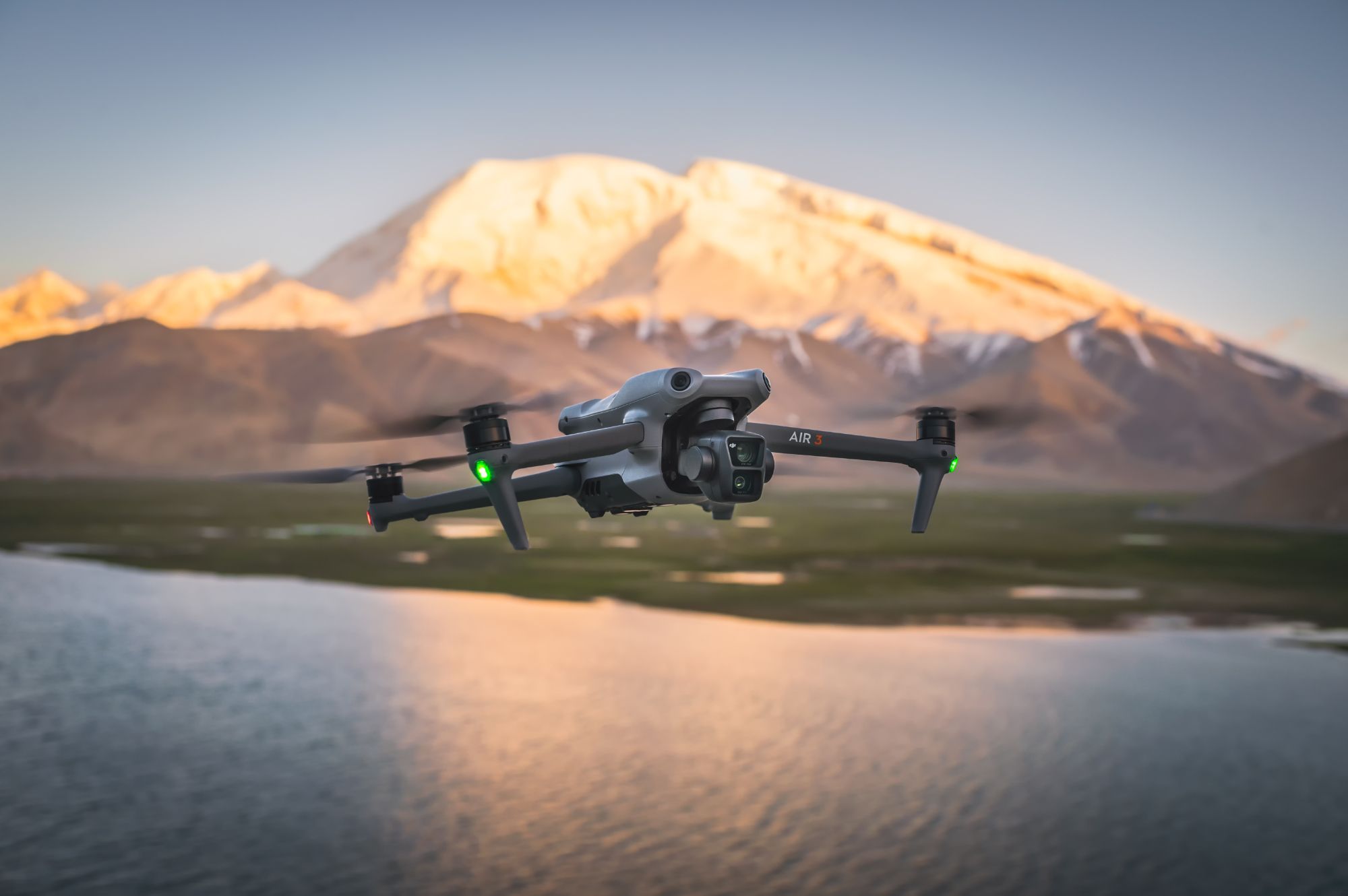DJI announces Air 3 drone with dual 4K cameras that can shoot simultaneously
DJI has been leading the market in photography drones for over ten years, starting all the way back with the original Phantom in 2013. After multiple iterations and redesigns, the current lineup of photography drones have matured to be very feature-rich, reliable, and easy to use. Today, DJI is packing all of that technology into a new member in the lineup, the Air 3.
The Air 3 has gained a number of interesting new features, but the major improvement is a dual camera system, which has become a popular feature of the Mavic 3 Pro — but there are some enhancements. The camera sensors are identical and offer the same capabilities so footage will naturally match, but they differ in the focal length and aperture of the lenses.
Each camera has a 1/1.3-inch sensor with dual native ISO for shooting 4K@60fps HDR or 4K@100fps (non-HDR) video and 48MP photos. The lens configuration provides a wide-angle lens equivalent to 24mm with an F1.7 aperture, and a 3x medium tele lens equivalent to 70mm with an F2.8 aperture.
Image credit: DJI
Both cameras can shoot in the typical modes at up to 4K resolution, but DJI also added a new dual-camera shooting mode that captures 2.7K vertical video with the tele lens and a second video with the wide angle lens. This produces a tight shot of the main subject that can be shared without cropping to social networks that prefer portrait orientation, all while the wide angle camera captures a full view that can fill out the edges when the video is posted to places that prefer landscape orientations.
The improvements don’t just stop at the camera. Battery life for the Air 3 can now reach up to 46 minutes of flight time, up from 34 minutes for the Air 2, and 31 minutes of the Air 2S. Likewise, the new model is equipped with the O4 HD Video Transmission System, which can reach a distance of up to 20km and deliver 1080p@60fps video.
The batteries also support a new Power Accumulation function using the charging dock from the Fly More Combo. With the press of the power button, all connected batteries transfer their power to the most-charged battery. This means there’s less reason to stress about getting the most out of each charge before setting the drone down to swap batteries.
The Air 3 is also the first of the Air series to gain Omnidirectional Obstacle Sensing, a feature that’s been limited to the Mavic 3 series until now. A pair of fisheye lenses on the front and rear give an effective 360° view around the sides and top, and a pair of binocular lenses and a 3D Time Of Flight (TOF) sensor ensure there are no surprises from below.
Image credit: DJI
The new Air 3 is available in three configurations. Starting at $1,099, the base package includes just the drone and necessary accessories, a single battery, and the RC-N2 controller — this one requires connecting a smartphone with a large screen to act as the touchscreen of the controller. The other two options are variations on the always popular Fly More Combo, which adds two batteries, a charging cradle that supports the new power accumulation function, a sturdy carrying tote, and several other accessories. The combo is available with either the RC-N2 controller for $1,349, or with the RC 2 controller for $1,549, which features a built-in screen. You can purchase directly from DJI or from a number of resellers.
Source: Android Police


